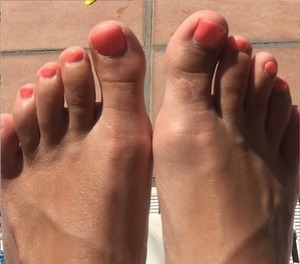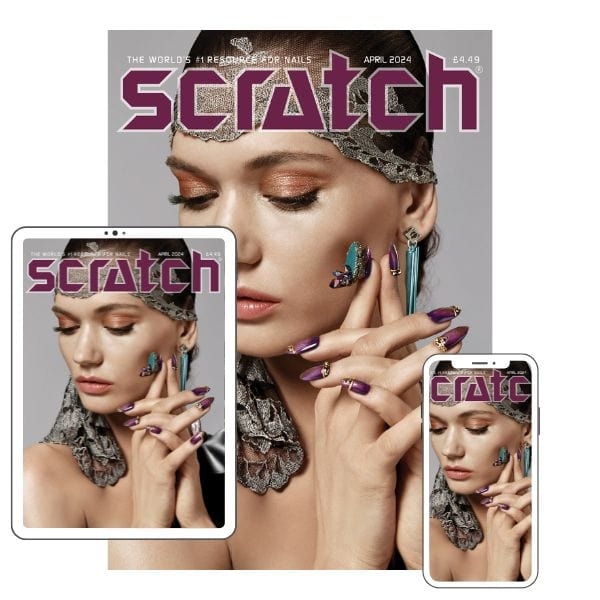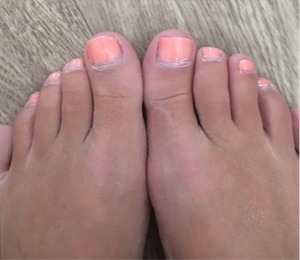
Gel polish fading? Here’s how to prevent it
By Katie Barnes | 22 August 2017 | Expert Advice, Feature, Technique

Salon owner, educator, former Scratch columnist and award-winning nail stylist, Katie Barnes, reveals why gel polish can fade in the summer – and how to help prevent it
Many techs are familiar with the issue of under-curing gel, but not so aware of the issues of over-curing gel. How many techs have been baffled by clients returning with what looks like a completely different colour to the one that originally applied?
When we think of gel polish curing, we instantly imagine the curing process during the service. What many forget is that there is UV exposure everywhere, from having a session on a sunbed to just working at a computer screen. While in different strengths, these all omit UV and will continue to ‘cure’ your gel.
Additional exposure to a certain amount of UV can’t be avoided, however excess exposure from sunbeds, natural sunlight, chlorine, chemicals and solvents will cause problems like discolouring and fading – and could even lead to premature service breakdown. With summer being one of the most popular times for clients to go on holiday, you may find yourself experiencing this more now than other times of the year.
What can the tech and client do?
While it can seem tedious, always recommend that your client take precautions such as drying their nails after each swimming session and before going in the sun (both chlorine and the sun are bleaching agents and together they are double the strength). Solvents such as insect repellent and sun tan lotions contain DEET, which is an effective solvent and can be known to dissolve and cause problems to some materials; fabrics and nail products such as polish and gel polish. I advise that clients wipe their nails or wash their hands immediately after application. You can create a ‘holiday aftercare sheet’ that explains everything, giving them no surprises.
To help prevent some of the problem, you can apply two thorough gel top coats which can deter some of the UV from penetrating directly to the colour quite so much. While it won’t eliminate the issue, it can help.
When I am aware that a client will be using chemicals such as insect repellent, hair colour, fake tan or is a heavy smoker, I recommend that if they don’t wear gloves, that they apply a clear nail polish over the gel polish and replace every few days (or whenever they use the product) to help prevent it staining the gel and only the nail polish top coat.
Many techs find this problem true of some colours more than others especially pinks and corals. The EU dictates which pigments are acceptable and which ones manufacturer’s must use and don’t take issues like this into consideration so it is out of the manufacturer’s control. If you are having an issue with a particular colour, get in touch with the manufacturer for their expert advice.
Trouble with removal?
The longer gel polish is worn, the longer it takes to remove. Gel polish is more likely to be difficult to remove if it is over cured, which can lead to nail damage such as surface white spots, created during the removal process because the harder the product is to remove, the more likely the tech is to scrape the product.
While these issues cannot be prevented, there are some steps that both tech and client can take to help. Proper understanding of the product and why this happens along with appropriate communication with your client is paramount.
Love Katie B x



